Complete Solutions to Illustrative Example of chapter Kinetic Theory of Gases and Gas Laws of Class 12 book with complete answers and questions
| Class 12 | PHYSICS |
| Chapter | Kinetic Theory of Gases and Gas Laws |
| PHYSICS GALAXY | Illustrative Example |
| Number Of Questions | 31 |
| Academic Year | 2023-24 |
A cylindrical container is shown in figure-2.7 in which a gas is enclosed. Its initial volume is Vand temperature is T. As no external pressure is applied on the light piston shown, gas pressure must be equal to the atmospheric pressure. If gas temperature is doubled, find its final volume. In its final state if piston is clamped and temperature is again doubled, find the final pressure of the gas.
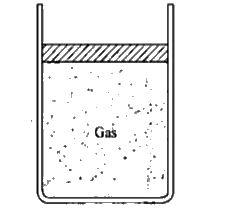 View Solution
View SolutionTwo glass bulbs of equal volume are connected by a narrow tube and are filled with a gas at `0^@C` and a pressure of 76cm of mercury. One of the bulbs is then placed in melting ice and the other is placed in a water bath maintained at `62^@C`. What is the new value of the pressure inside the bulbs? The volume of the connecting tube is negligible.
05:42View SolutionTwo closed containers of equal volume of air are initially at `1.05xx10^(5)` Pa, and 300 K temperature. If the containers are connected by a narrow tube and one container is maintained at 300 K temperature and other at 400 K temperature. Find the final pressure in the containers.
04:52View SolutionEqual masses of air are sealed in two vessels, one of volume `V_(0)` and the other of volume `2V_(0)`. If the first vessel is maintained at a temperature `300K` and the other at `600K`, find the ratio of the pressures in the two vessels.
04:03View SolutionA glass container encloses a gas a pressure of `8 xx 10^(5)` pa and 300 K temperature. The container walls can bear a maximum pressure of `10^(6)` Pa. If the temperature of container is gradually increased, find the temperature at which the container will break.
01:10View SolutionFind the minimum attainable pressure of one mole of an ideal gas. If during its expansion its temperature and volume are related as `T=T_(0)+alphaV^(2)` where `T_(0)&alpha` are positive constants
02:51View SolutionA smooth vertical tube having two different cross sections is open from both the ends but closed by two sliding pistions as shown in Fig. and tied with an inextensible string. One mole of an ideal gas is enclosed between the piston The difference in cross-sectional areas of the two pistons is given `Delta S`. The masses of piston are `m_(1)` and `m_(2)` for larger and smaller one, respectively. Find the temperature by which tube is raised so that the pistons will be displaced by a distance l. Take atmospheric pressure equal to `P_(0)`
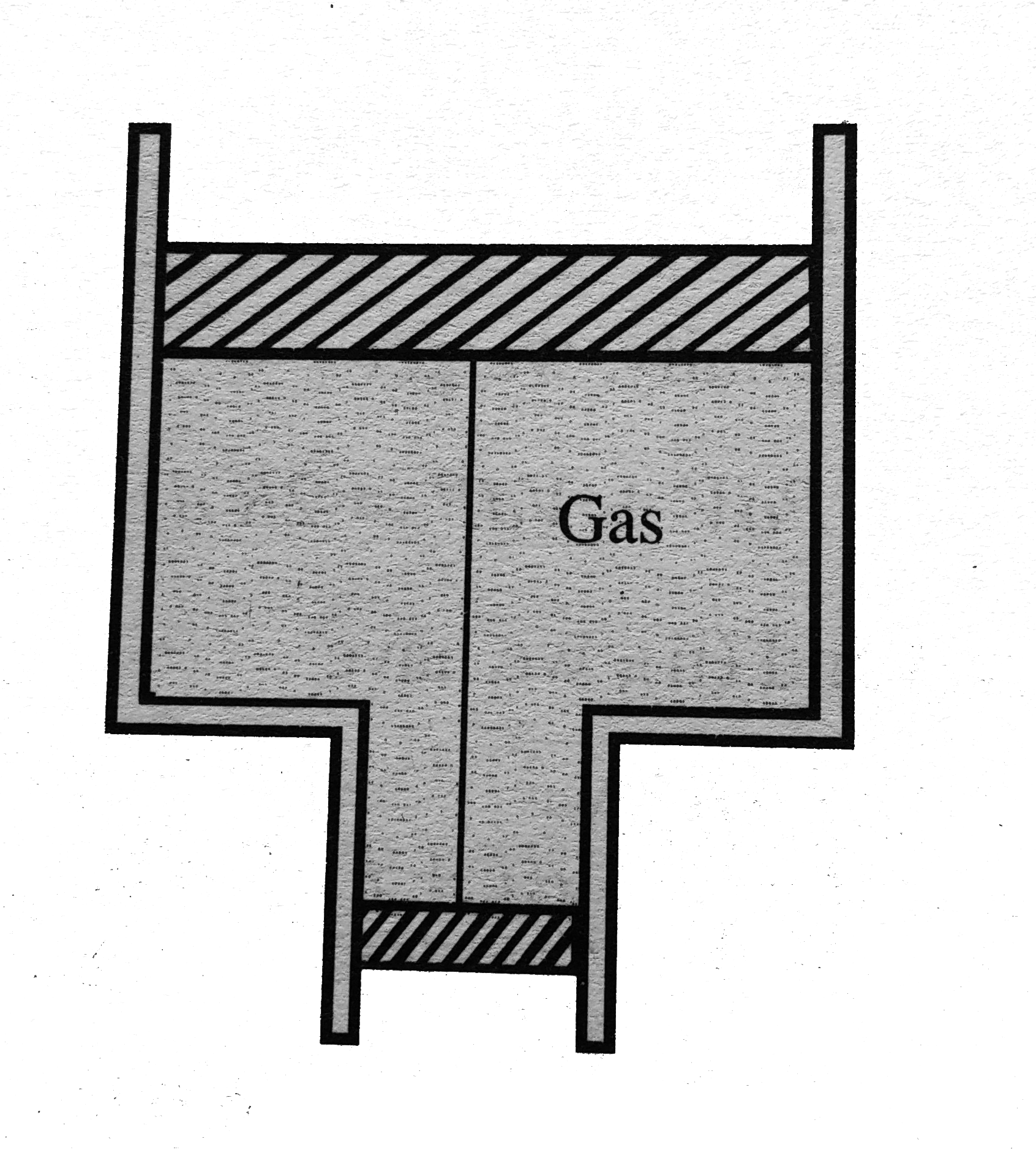 04:26View Solution
04:26View SolutionA vertical cylinder of height 100 cm contains air at a constant temperature and its top is closed by a frictionless piston at atmospheric pressure (76 cm of Hg) asshown in figure-2.12. If mercury is slowly poured on the piston, due to its weight airis compressed. Find the maximum height of the mercury column which can be put on the piston.
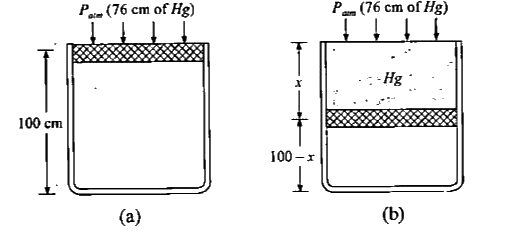 06:23View Solution
06:23View SolutionA vertical hollow cylinder of height `1.52 m` is fitted with a movable piston of negligible mass and thickness. The lower half portion of the cylinder contains an ideal gas and the upper half is filled with mercury. The cylinder is initially at `300 K`. When the temperature is raised half of the mercury comes out of the cylinder. Find this temperature assuming the thermal expansion of the mercury to be negligible.
 04:17View Solution
04:17View SolutionA tall cylindrical vessel with gaseous nitrogen is located in a uniform gravitational field in which the free-fall acceleration is equal to `g`. The temperature of the nitrogen varies along the height `h` so that its density is the same throught the volume. find the temperature gradient `dT//dh`.
07:36View SolutionAn open glass tube is immersed in mercury in such a way that a lenth of 8cm extends above the mercury level. The open end of the tube is then closed and sealed and the tube is raised vertically up by additional 46cm. What will be length of the air column above mercury in the tube now?
(Atmosphere pressure =76cm of Hg)05:55View SolutionA uniform tube closed at one end, contains a pellet of mercury `10cm` long. When the tube is kept vertically with the closed-end upward, the length of the air column trapped is `20cm`. Find the length of the air column trapped when the tube is inverted so that the closed-end goes down. Atmospheric pressure`=75cm` of mercury.
05:26View SolutionFig. shows a horzontal cylindrical container of length `30 cm`, which is partitioned by a tight-fiting separator. The separator is diathermic but conductws heat very slowly. Initially the separator is the state shown in the figure. The temperature of left part of cylinder is `100 K` and that on right part is `400 K`. Initially the separator is in equilibrium. As heat is conducted from right to left part, of separator after a long when gases on the two displacement of separator after a long when gases on the two parts of cylinder are in thermal equilibrium.
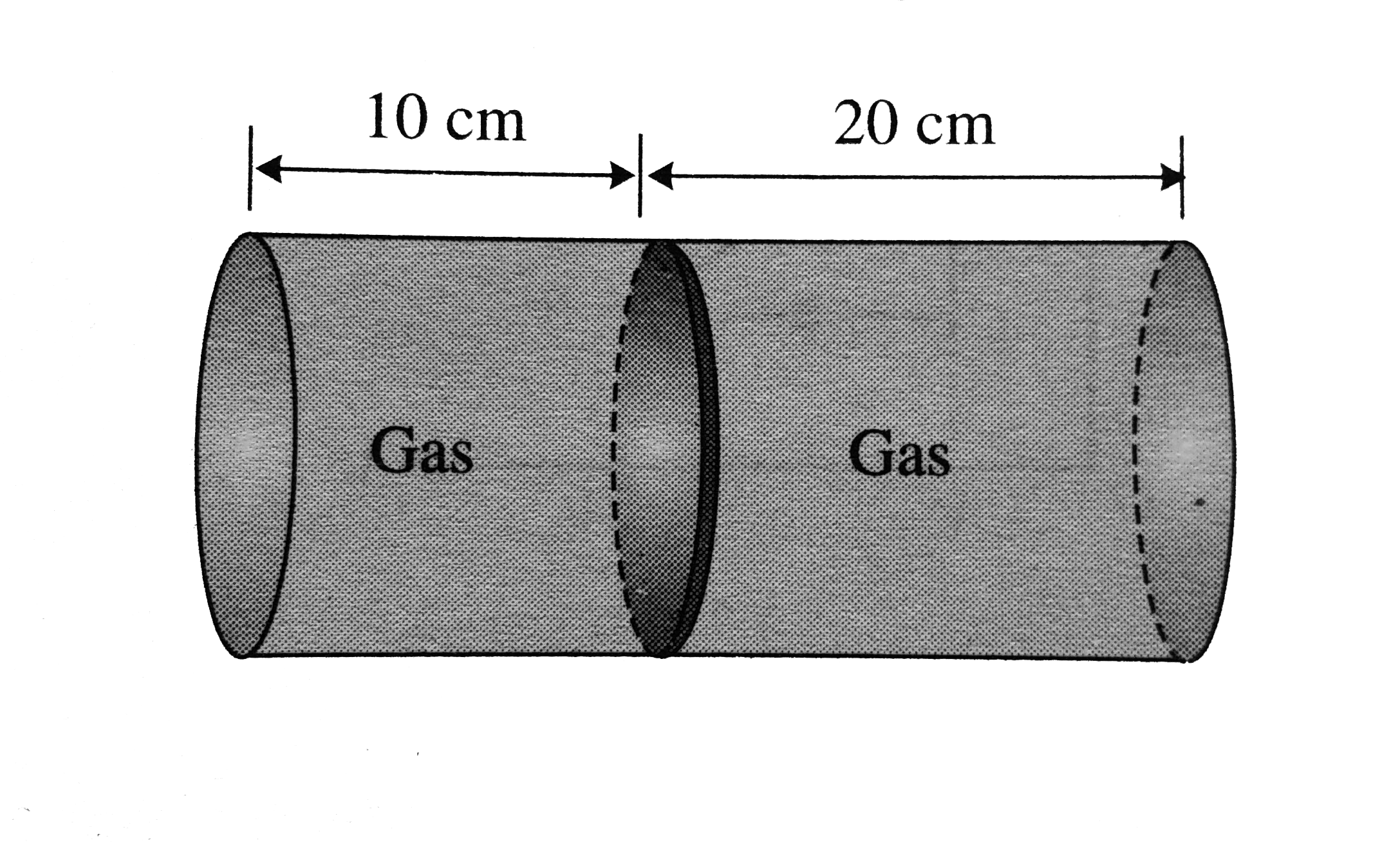 04:20View Solution
04:20View Solution(a) Calculate (i) root-mean-square speed and (ii) the mean energy of 1 mol of hyderogen at STP given that density of hydrogen is `0.09 kg//m^(3)`. (b) Given that the mass of a molecule of hydergen is `3.34 xx 10^(-27)` kg, calculate Avogadro's number. (c ) Calculate Boltmann's constant.
03:51View SolutionGiven that the mass of a molecule of hydrogen is `3.34xx10^(-27)` kg. Calculate Avogadro's number.
View SolutionCalculate Boltzmann's constant.
01:30View SolutionCalculate the number of molecules in `1" cm"^(3)` of an ideal gas at `27^(@)C` and a pressure of 10 mm of mercury. Mean kinetic energy of a molecule at `27^(@)C` is `4xx10^(-14)` erg, the density of mercury is 13.6 gm/c.c.
02:13View SolutionA parallel beam of nitrogen molecules moving with velocity `v = 400 m s^(-1)` imprings on a wall at an angle `theta = 30^(@)` to its normal. The concentration of molecules in the beam is `n = 9 xx 10^(18) cm^(-3)`. Find the pressure exerted by the beam on the wall, assuming that collisions are perfectly elastic.
10:06View SolutionCalculate the temperature at which rms velocity of a gas molecule is same as that of a molecule of another gas at `47^(@)C`. Molecular weight of first and secon gases are 64 and 32 respectively.
02:42View SolutionFigure-2.28 shows a cylindrical container which is divided in two equal parts by a clamped diathermic piston. Different ideal gases are filled in the two parts. It is found that the rms speed of molecules in the lower part is equal to the mean speed of molecules in the upper part. Find the ratio ofmass of molecule of gas in lower part to that of the gas in upper part.
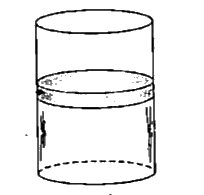 05:45View Solution
05:45View SolutionIn a closed container of volume `10^(-3)m^(3),O_(2)` gas is filled at temperature 400 K and pressure 1.5 atm. A small hole is made in the container from which gas leaks out to pen atmosphere. After some time the temperature and pressure of container become equals to that of surrounding. Find the mass of gas that leaks out from the container. (Atmospheric temperature = 300 K)
06:49View SolutionIn a certain region of outer space there are only 100 molecules per `cm^(3)` on an average. The temperature there is about 3 K. What is the average pressure of this very dilute gas.
06:15View SolutionOne gram mole of oxygen at `27^@C` and one atmospheric pressure is enclosed in a vessel. Assuming the molecules to be moving with `v_(rms)`, find the number of collisions per second which the molecules make against one square metre of the vessel wall.
07:06View SolutionCalculate (a) the average kinetic energy of translation of an oxygen molecule at `27^(@) C` (b) the total kinetic energy of an oxygen molecule at `27^(@)C` (c ) the total kinetic energy in joule of one mole of oxygen at `27^(@)`. Given Avogadro's number `= 6.02 xx 10^(23)` and Boltzmann's constant `= 1.38 xx 10^(-23) J//(mol-K)`.
02:58View SolutionCalculate (a) the average kinetic energy of translation of an oxygen molecule at `27^(@) C` (b) the total kinetic energy of an oxygen molecule at `27^(@)C` (c ) the total kinetic energy in joule of one mole of oxygen at `27^(@)`. Given Avogadro's number `= 6.02 xx 10^(23)` and Boltzmann's constant `= 1.38 xx 10^(-23) J//(mol-K)`.
02:58View SolutionCalculate (a) the average kinetic energy of translation of an oxygen molecule at `27^(@) C` (b) the total kinetic energy of an oxygen molecule at `27^(@)C` (c ) the total kinetic energy in joule of one mole of oxygen at `27^(@)`. Given Avogadro's number `= 6.02 xx 10^(23)` and Boltzmann's constant `= 1.38 xx 10^(-23) J//(mol-K)`.
02:58View SolutionA mass M = 15 g of nitrogen is enclosed in a vessel at temperature T = 300 K. What amount of heat has to be transferred to the gas to increase the root-mean-square velocity of molecules 2 times ?
02:30View Solution1 gm of helium having rms velocity of molecules 100 m/s and 4 gm of oxygen having rms velocity of molecules 1000 m/s are mixed in a container which is thermally isolated. What are the rms velocities of helium and oxygen molecules after equilibrium is attained ?
View SolutionA cubical vessel of side 1 m contains one mole of nitrogen at a temperature of 300 K. If the molecuels are assuming to move with the rms velocity
find the number of collisions per second which the molecules may make with the wall of the vessel06:24View SolutionA cubical vessel of side 1 m contains one mole of nitrogen at a temperature of 300 K. If the molecuels are assuming to move with the rms velocity
further if the vessel now thermally insulated moved with a constant speed v and then suddenly stopped and this results in rise of temperature by `2^(@)C`, find v.View SolutionAs adiabatic vessel contains `n_(1) = 3` mole of diatomic gas. Moment of inertia of each molecule is `I = 2.76 xx 10^(-46) kg m^(2)` and root-mean-square angular velocity is `omega_(0) = 5 xx 10^(12) rad//s`. Another adiabatic vessel contains `n_(2) = 5` mole of a monatomic gas at a temperature `470 K`. Assume gases to be ideal, calculate root-mean-square angular velocity of diatomic molecules when the two vessels are connected by a thin tube of negligible volume. Boltzmann constant `k = 1.38 xx 10^(-23) J//:"molecule"`.
04:08View Solution
Illustrative Example questions and complete solutions for chapter Kinetic Theory of Gases and Gas Laws of GK PUBLICATIONS PHYSICS (HINGLISH) of Class 12
